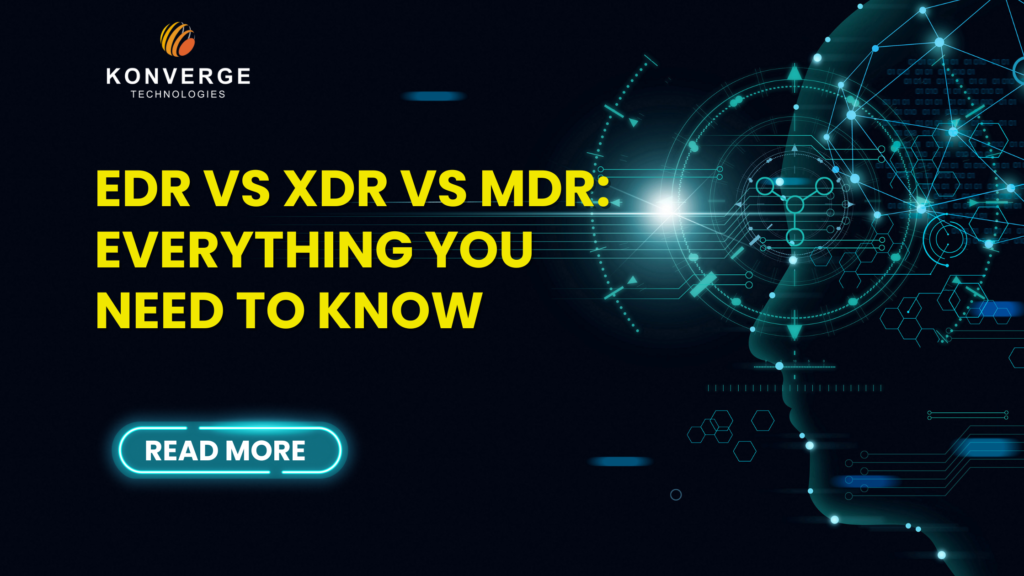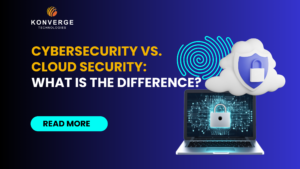
EDR vs XDR vs MDR: Everything You Need To Know

Today, staying ahead of threats and attacks has become a top priority for organizations. Enterprises make a lot of effort to secure their data. EDR, XDR, and MDR are three threat detection and response approaches that safeguard your business with all they’ve got. In this blog, we will break down these acronyms and provide you with a clear understanding of what each entails, their differences, and how they contribute to safeguarding your digital assets.
Endpoint Detection and Response (EDR)
Endpoint Detection and Response (EDR) focuses on monitoring and securing endpoints, such as laptops, desktops, servers, and mobile devices. EDR solutions gather and analyze endpoint data to detect suspicious activities, threats, and vulnerabilities. They provide real-time visibility into endpoint activities, enabling quick detection and response to potential threats.
Key Features of EDR
Endpoint Data Collection
EDR solutions collect and analyze data from endpoints, helping to identify unusual behavior and patterns.
Threat Detection
EDR employs advanced analytics to identify known and unknown threats using behavioral analysis, machine learning, and signature-based detection.
Incident Response
EDR aids in investigating and responding to security incidents by providing insights into the attack’s scope and impact.
Endpoint Isolation
Some EDR solutions allow administrators to isolate compromised endpoints to prevent further spread of threats.
Managed Detection and Response (MDR)
Managed Detection and Response (MDR) takes a proactive approach by combining technology, human expertise, and threat intelligence to detect, respond to, and mitigate cyber threats. MDR services are often outsourced to third-party security providers who monitor an organization’s network 24/7, providing real-time threat analysis and incident response.
Key Features of MDR
Continuous Monitoring
MDR providers offer round-the-clock monitoring to detect and respond to threats as they occur.
Threat Hunting
MDR teams actively search for signs of compromise, even before alerts are triggered, ensuring early threat detection.
Incident Response
MDR services provide incident investigation, containment, eradication, and recovery assistance.
Expert Analysis
MDR combines human expertise with automated tools to provide accurate threat assessments and actionable insights.
Extended Detection and Response (XDR)
Extended Detection and Response (XDR) is an evolution beyond EDR and MDR, aiming to unify and centralize security data across multiple security products and environments. XDR extends detection and response capabilities beyond endpoints to encompass networks, email, cloud, and more, allowing for a holistic view of threats.
Key Features of XDR
Cross-Layer Visibility
XDR correlates data from various security tools across different layers to provide a comprehensive view of potential threats.
Threat Context
XDR solutions offer insights into the tactics, techniques, and procedures (TTPs) used by attackers, aiding in effective response.
Automated Responses
XDR enables automated response actions based on predefined playbooks, reducing manual intervention and response time.
Improved Efficiency
By integrating and correlating data from multiple sources, XDR helps reduce alert fatigue and false positives.
EDR vs MDR vs XDR: Everything You Need To Know
EDR vs XDR vs MDR, selecting the right cybersecurity approach depends on your organization’s size, resources, and security needs. EDR is well-suited for organizations seeking endpoint-focused security, while MDR provides a managed and outsourced solution for threat detection and response. XDR offers a more comprehensive, cross-layer approach that can be appealing to organizations with complex and hybrid IT environments.
As cyber threats continue to evolve, organizations must adopt advanced cybersecurity strategies to safeguard their assets. Whether you opt for EDR vs XDR vs MDR, each approach brings its own strengths to the table. By understanding the differences and benefits of these solutions, you can make an informed decision to enhance your cybersecurity posture and protect your digital infrastructure.



